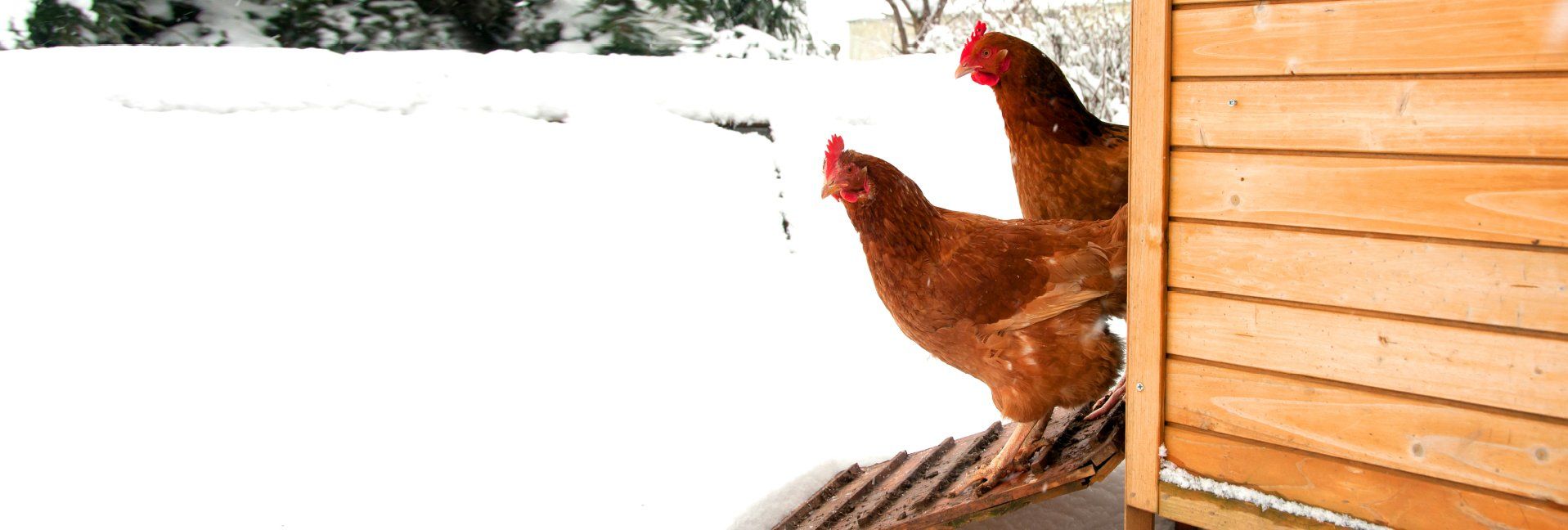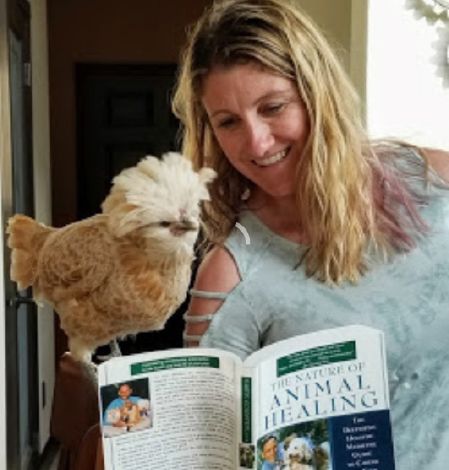To Heat or Not to Heat… The question is not about comfort, but safety


Winter is coming, and if you keep chickens that means breaking out the heated waterers, bulking up on feed, stocking up on Vaseline to protect delicate combs from frostbite, and planning ahead so your backyard chickens stay toasty warm during those frigid winter months.
The most commonly asked questions for new backyard and urban chicken farmers are, “How do we heat the coop?” and, conversely, “Should we heat the coop?”
That last one is the most debated so we will start with it first.
It’s a fact that chickens were built to withstand the great outdoors
Should you heat the coop?
Coops that are properly ventilated and insulated should be able to keep your chickens comfortable throughout the pumpkin spice months. Also, it’s a fact that chickens were built to withstand the great outdoors; they have insulating feathers, tough skin and overall just a rugged personality. But even if your coop is insulated better than your own house, and your chickens are as robust as Alaskan lumberjacks, nature can throw you a curve ball.
There is a concern that heating a coop can affect your chicken’s ability to regulate their own body temperature. And there’s the ever-looming fear of an electrical short that could turn your coop into a rotisserie. These fears can be quelled by setting up the coop heater properly (to be discussed a bit).
There are many factors to help you decide if you should heat your coop: your climate, the size of your coop, the size of your flock, and what breed of chickens you keep.
Your climate
Just how cold is “cold” in your area? Do you live in southern California or northern Minnesota?
Long-lasting deep freezes can certainly justify a coop heater but using a heater for short-term chilly weather can cause more harm than good
Just how dramatic are the shifts in temperature? In Colorado where I live, it’s totally normal to wake up with a foot of snow on the ground but still play a round of golf in the hot sun by that afternoon (people here wear a lot of layers). With shifts this fierce, keep in mind that your chickens can quickly overheat if the coop heater isn’t carefully managed throughout the day.
Coop and flock size
Smaller coops if properly insulated can hold onto heat much more efficiently. The heat from as few as three chickens in a coop designed specifically for that number can stave off the coldest nights. If you have a larger coop with fewer chickens, then their body heat can’t keep up with the volume of space; they’ll be cold.
Chicken breeds
Some chicken breeds are just better acclimated to colder climates.
The best cold-tolerant chickens are nicely feathered and have smaller combs and wattles to prevent frostbite
Breeds with these features include brahmas, cochins, dominiques, orpingtons, and wyandottes.
I have all these breeds and can vouch that they weather the temperamental Colorado winters perfectly fine. My Crested Polish, however, required me to modify a dog sweater for her to wear on the coldest nights
So, you want to heat your coop
If you’ve decided that heating your coop is the right thing for your flock, learn this:
NO HEAT LAMPS!
These 250-watt infrared bulbs can be purchased inexpensively at most feed or retail stores. Heat lamps put out 435 degrees or more of direct heat. Coops tend to be dusty and filled with flammable hay, straw or shavings, making a recipe for disaster.
Heat lamps also have a tendency to go out at the most inopportune moments. Say you have a super cold night so you flip on the heat lamp and your hens cozy up for a nice, warm slumber. A few hours later, the lamp suddenly burns out. No more heat. Your ladies had fallen asleep under a toasty warm lamp and now they are enveloped by a sudden, bitter cold.
This dramatic dip in temperature is enough to shock their systems and cause death. So, what safer options do you have?
Coop-friendly heaters
The best heaters do not heat the whole coop, but rather just provide close contact heat to chickens who sit or stand close to it. So chickens that are more cold-tolerant can roost further away from it and not get overheated.
Keep in mind that if your electricity goes out, your flock loses this heat source
If possible, the best option really remains to allow your chickens to acclimate to the seasons and cuddle together for warmth.
For chickens who are not cold-hardy, here are some ideas:
Sweeter Heaters are safe and energy-efficient heaters specifically made for chicken coops. The surface temperature has a safe range of 160-180 degrees Fahrenheit, and designed to warm the animal, not the whole coop. It is fully adjustable and has a fail-safe that turns the unit off automatically if heat is not allowed to escape.
Cozy Coop offers a flat panel heater that combines both radiant and convection heat and is very energy efficient. Chickens can snuggle close to the panel for warmth without the worry of getting burned. I use this product in my coop have never had a frostbit comb or been awakened by irritable hens pecking at the back door to be let in.
Additional cold-weather tips
Ventilate—You obviously want to fill any gaps in the seams, but air flow is important for the health of the flock. Lack of ventilation can cause ammonia build up and mildew. Vents should be installed towards the roof of the coop to release warm, moisture-ridden air and introduce cooler, drier air. This will prevent mildew from excess humidity and allow fresh air to circulate.
Seal gaps—Be sure to securely seal any and all gaps. Minimize drafts by cutting plywood to cover the gap and then screw it in. Note: this makes your vents important to release stagnant air.
Insulate—We use rigid board insulation (extruded polystyrene) to line the inside wood panels of our coop. This helps keep the roost cooler in the summer and warmer in the winter. Spray foam is also an option, but be very careful to only spray the outside of the roost where your chickens can’t peck it. Spray foam also seals almost too well, so your ventilation must be on par.
Build a good roost—Chickens naturally love to roost. This provides them the opportunity to get off the cold ground, fluff up their insulating feathers, and snuggle close to each other for warmth. A roost should be at least two feet off the ground and long enough to accommodate all your chickens.
Overall, chickens are capable of handling some pretty extreme weather if your coop is well-built and your chickens have been bred to withstand the temperatures of their environment. A little extra care and some research is all it takes to make winter a pleasurable experience for your flock.
Tags:Chicken Chatter

Acreage Life is part of the Catalyst Communications Network publication family.














